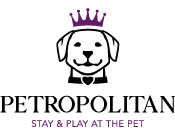National Pet Fire Safety Day
How to Keep Your Pet Safe In the Event of a Fire
Every year on July 15th, National Pet Fire Safety Day raises awareness about protecting pets in the event of a fire. It’s a vital reminder that preparedness saves lives. Living and travelling in Alberta, means enjoying our beautiful wilderness and vibrant, dense city living—the reality is lately, there’s always a risk of fire.
As a pet parent in Calgary, it’s crucial to take extra precautions when it comes to fire safety for pets. Whether you’re dealing with wildfire threats in nearby areas, being prepared can make all the difference.
This guide will walk you through essential fire safety tips for Alberta residents, emergency pet evacuation planning, and how to keep your pets safe before, during, and after a fire emergency.
Whether you’re dealing with wildfire threats in nearby areas, being prepared can make all the difference. This guide will walk you through essential fire safety tips for Alberta residents, emergency pet evacuation planning, and how to keep your pets safe before, during, and after a fire emergency.
Here are 10 ways to prepare for and keep your pets safe during a fire:
- Include your pets in your evacuation plan
Decide in advance who will grab the leash, crate, or carrier—and where everyone will meet outside. - Prepare a pet “Go Kit”
Pack essentials in an easy to grab bag: at least 7 days of food and water, medications, veterinary records, leash/collar/ID tags, crate/carrier, towel or blanket, favorite toy, waste bags, and copies of microchip information. Having your pet’s vaccine certificate and microchip information saved on your phone now is so valuable in the event of any medical, travel or environmental emergency pertaining to your pet. - Keep leashes and carriers near exits
Store them by doors so you can evacuate quickly. Consider having a spare in your car for yourself, people or strays that may need assistance. - Display pet alert window clings
Let firefighters know how many pets are inside and where they might be. This helps them focus their time on evacuation over looking for pets that might be hiding in unlikely places. - Carry pets out properly
Use crates, carriers, slings, or towels to protect them from smoke and reduce panic. Crate and carrier training your pets can help reduce their stress in the event of an emergency and keep them safe during evacuation. Securing your pet ensures they don’t run back into the home if they escape being held or back out of a collar. Stressed pets can bite and scratch when frightened. - Stay out of the building
Never re-enter a burning structure—firefighters are trained and equipped to rescue pets as safely as possible. - Crate or carrier train your pet
Help your pet see the crate as a safe space to make evacuations smoother. Start with short, positive sessions—feed and play inside with the door open, then close the door briefly to build comfort. When people have to evacuate and leave pets behind, rescue crews must crate both cats and dogs for evacuation. Being comfortable while crated and easy to handle and well socialized with people is an essential life skill that will drastically reduce your pet’s stress levels in these situations. In the event of a fire, secure your pet in a neighbor’s yard, home, garage or your car. Ensure your pet is secure and not able to escape or run back into a burning building. - Pet-proof your home
Make sure electric cords are out of reach, unplug appliances when not in use, and block access to risky areas. Turn off risky appliances when you’re out of the home (fans, dryers). Don’t allow pets to jump on counter tops where candles, stove and oven handles can easily start a fire if bumped. Don’t store flammable items on your stove that may melt if your dog turns on the burner while jumping up to steal food. - Update IDs and microchips
Ensure collars have current tags and microchip registrations are up to date—crucial if your pet escapes during an emergency. Ensure your pet’s personal ID tag is legible and current with your phone number. Information can rub off or tarnish with time. - Know your Calgary City and Provincial resources
- Calgary Animal Services: Offers disaster prep brochures, crate training tips, low-cost microchipping, and guidance on assembling pet disaster kits. You can even order an “IN CASE OF FIRE” sticker online!
- Government of Alberta Emergency Planning for Pets: Provides downloadable pet emergency checklists and planning resources.
- Calgary Fire Department: All Calgary Firefighters are trained in pet CPR and engines carry equipment specially designed to help resuscitate pets. Firefighters will absolutely rescue pets when they are able to safely find them. A program was developed in 2008, in collaboration with the Calgary Animal Referral and Emergency (CARE) Centre, to teach firefighters how to assess animals, open their airways and provide compressions and/or rescue breathing as required. Pets can be difficult to find during a fire as a scared animal will hide in the most unexpected places, and sometimes run back into a burning home that is their safe space. CFD members have special training in securing and restraining pets for evacuation.
- Alberta SPCA: has a list of items you can prepare for your pet in the event of an emergency and has handy tips, like using a foil roasting pan, as a temporary litter box for your cat while evacuating.
A little preparation and planning can go a long way in keeping our best friends safe.

